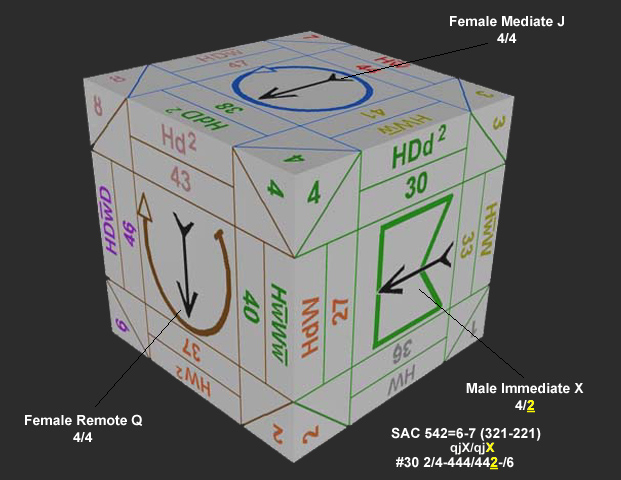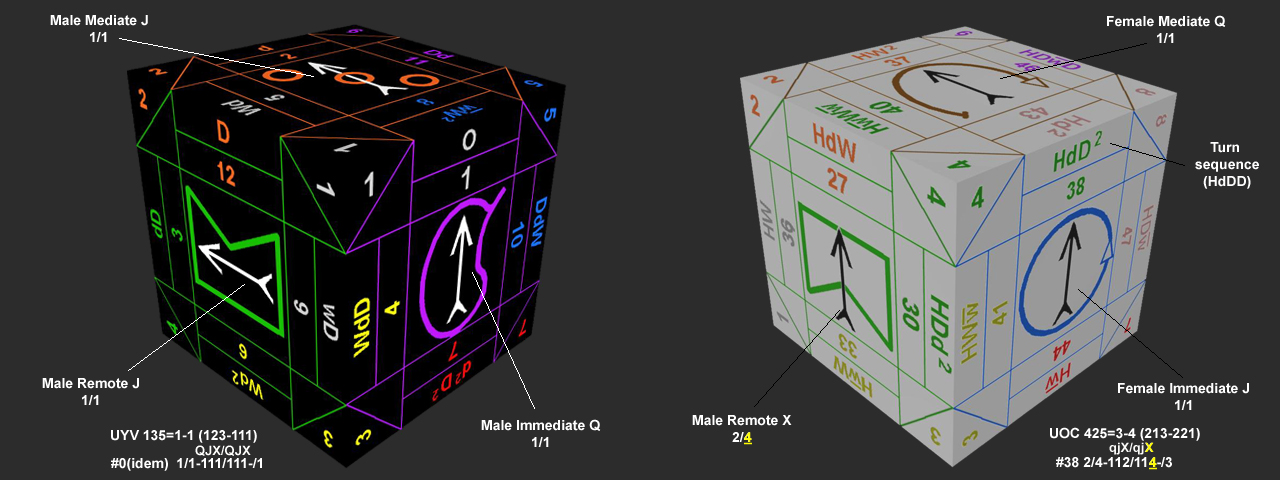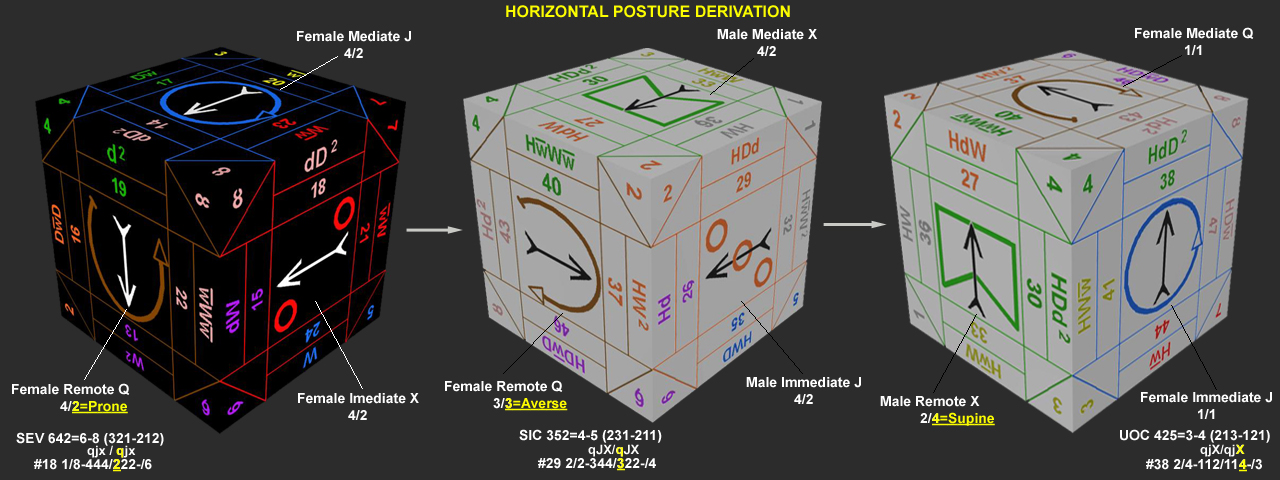To examine the parapermic posture functions in more detail, another example using the Concave tablock is provided. Take Supine A Cave(#30),which has a paraperm of 6-7 expanded to its form 2/4-444/442-/6. First, in the function is the 2/4, 2 being the flex of Concave, 4 is the polar component. Next, we separate the posture function into its q,j,X V/H postures. These are 4/4 for female Salt(U), Again, 4/4 for female Quicksilver(O) and 4/2 for male Sulphur(A). Since the tablock flex is in parity only with the sex (female on Cave tablock) of the first two faces, these are both Supine (4/4). The disparity of the immediate male Sulphur remains and the horizontal 2 is derived from the reciprocal of its posture, which is also Supine (hence, 4/2). The final -/6 is the abbreviated principal perm (321,Xjq) discussed in the previous section.

To continue with the tropes and how they affect posture, take #38 UOC-425(paraperm 3-4),which has 2/4 as its paraperm flex and polar respectively. #38 is an HdDD trope, which tells us these are the series of turns applied to arrive at #38 from the 0 face or idemfactor. In other words, a horizontal reflection from UYV(1-1) to the Cave Tablock, UYC(1-5) followed by the d and then DD turns. First, notice the i,m,r postures of the UYV(idemfactor) face are all vertical (1/1, 1/1, 1,1). Next, examine the m & r postures of #38, which are also vertical postured faces. From this we can observe what the turns will do to the vertical paraperm portion of another toperm. In this case, Upright Y Vex=135 has the i,m,r verticals 111/; Upright O Cave=425 has the resulting i,m,R verticals of 112/=(UUP). The turn affects only the vertical parameter of the remote by rotating 90 degrees, thus Proning it; the i and m postures remain unchanged and are both 1=“Abite”, or no change, in posture.

To derive the horizontal side of the parapermic function of #38, apply the same HdDD trope upon another toperm whose faces are all horizontal, such as Supine E Vex(#18)=642. Begin with a horizontal reflection from SEV(#18) onto the Cave Tablock as PEC(#42), followed by the d and DD turns. This series of turns arrives at Supine I Cave(#29)=352. In this instance, SIC(#29) has reversed both the i & m sex and flex from SEV(#18),(the sex & flex of these postured Male faces have disparity on the Cave tablock just as their reciprocal Females do on the Vex faces of #18), but not their postures and thus are 1=“Abite”= no posture change. The remote face posture of SIC has changed from Supine on #18 to Averse on #29 but has parity between sex & flex (being a Female face on the Cave tablock). This means the Supine U horizontal posture of #18, which is a female upon the Vex tablock, initially is 2=Prone (4/2); and then is acted upon by the U Averse of #29 such that the horizontal posture of 2=Prone changes to its reciprocal (by 3=Aversed) of 4=Supine. In other words, the U Averse indicates to reverse the horizontal posture. As a result, this series of turns (#38HdDD) applied to horizontals begin their postures from the #18 horizontals and subsequently derive from #29 its effect upon the horizontal portion of #38 paraperm as /114. The horizontal derivation could also be notated as: #18-PPP-/222, which becomes #38-SSA-/114.
